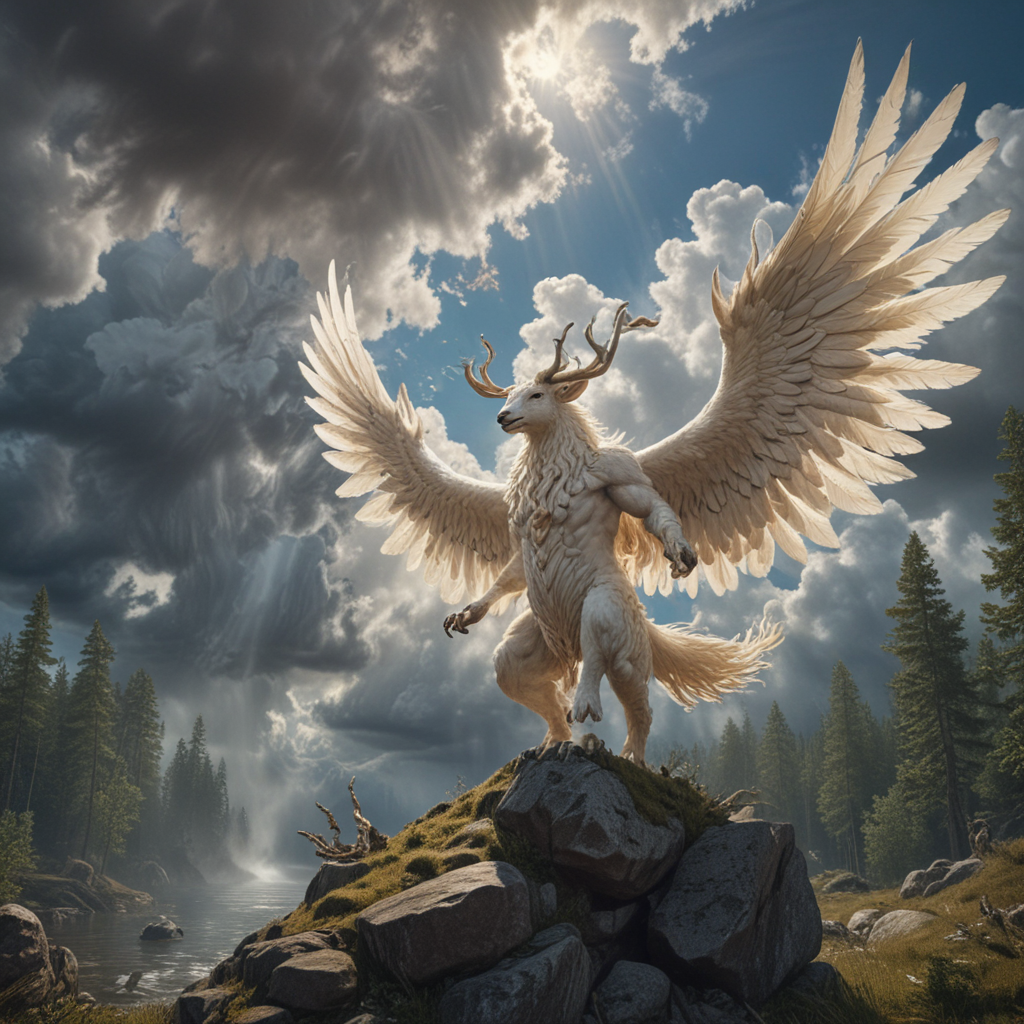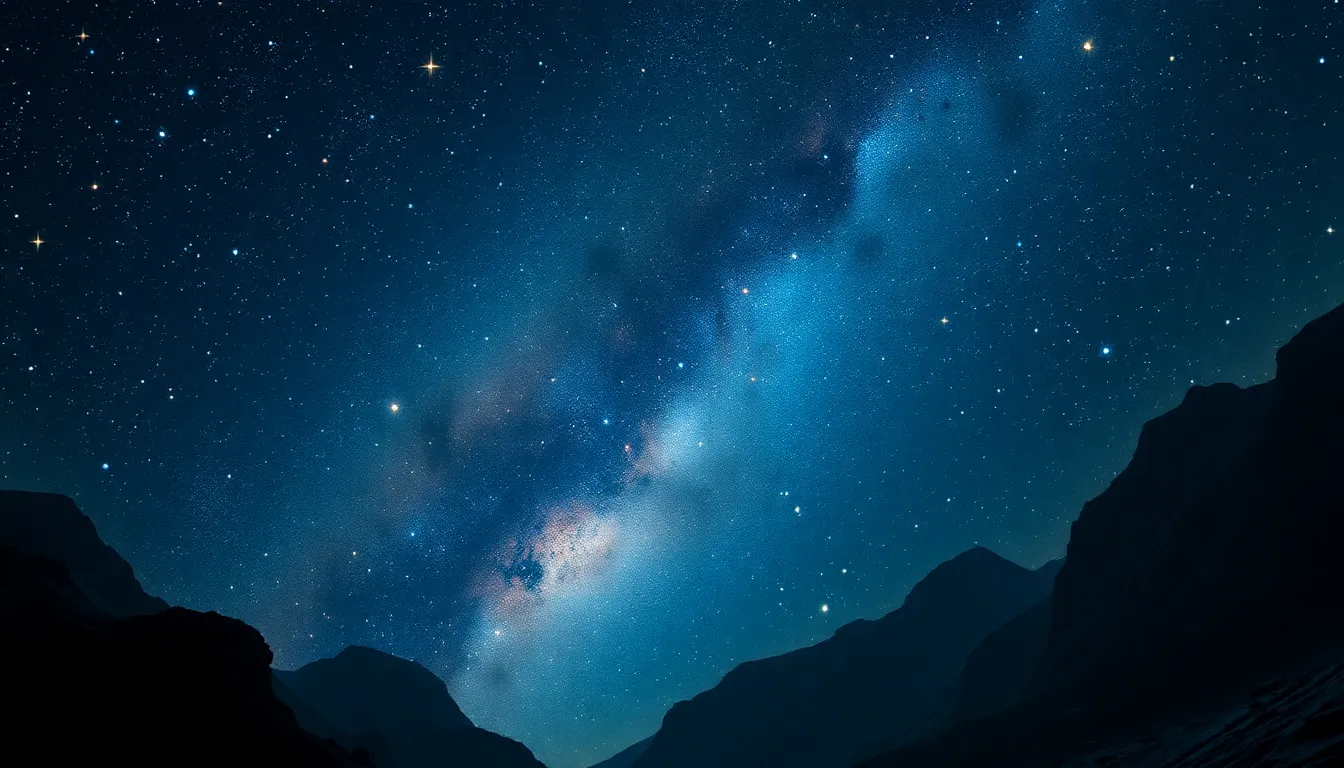Finnish Mythology: Legends of the Sky
I. The Celestial Dome
In Finnish mythology, the celestial dome is a vast and mysterious realm believed to encompass the entire cosmos and separate the earthly plane from the heavens. This dome-shaped structure is often referred to as "Ukko's anvil," named after the supreme deity Ukko, who presides over the sky and controls the forces of nature. The celestial dome is considered a boundary that protects Earth and its inhabitants from the unknown forces of chaos lurking beyond.
II. The Stars and Constellations
The Finns recognized and named numerous stars and constellations that adorned the night sky, each carrying its own unique symbolism and legends. The most prominent constellation is the Big Dipper, known as the "Otava" in Finnish. It is associated with Ursa Major, the celestial home of the dead and the gateway between the living world and the afterlife, according to ancient beliefs. The constellation of Cygnus, the Swan, is also revered as the symbol of the goddess Louhi, the powerful mistress of the Northern realm, Pohjola.
III. The Celestial Luminaries
The sun and moon, known as "Aurinko" and "Kuu," respectively, play crucial roles in Finnish mythology. The sun is seen as a divine entity, representing fertility and life, while the moon is associated with feminine power and influence over the tides and seasons. The Finns believed eclipses occurred when celestial beings or mythical creatures interfered with the paths of the sun or the moon, casting them into darkness. These events were often interpreted as omens or warnings from the gods.
IV. The Wind and Storms
The wind, often personified as the god Tuuli, is a powerful force in Finnish mythology. It can be gentle and life-giving or fierce and destructive, carrying the souls of the dead to Tuoni's kingdom in the afterlife or summoning tempests that shake the very foundations of the earth. Storms, particularly thunderstorms, are seen as manifestations of the wrath of Ukko, who uses his magical hammer to punish those who have angered him or violated sacred taboos.
V. The Clouds and Rain
The Finns believed that clouds were the abode of the spirits and deities of the air. Different types of clouds were thought to indicate specific weather conditions or divine messages. Rain was seen as a blessing from the heavens, essential for the fertility of the land, but heavy rainfall or flooding was considered a sign of Ukko's displeasure or the intervention of malevolent forces in the natural order.
VI. The Thunder and Lightning
Thunder and lightning are two of the most awe-inspiring and mysterious phenomena in nature, and in Finnish mythology, they are believed to be manifestations of Ukko's power and anger. Thunder is said to be the sound of Ukko's hammer striking down on wrongdoers, while lightning is the flashing brilliance of his divine wrath. Lightning bolts were believed to hold immense power and were sometimes harnessed by skilled wizards and shamans, who could direct their destructive force against enemies or summon them for protection.
VII. The Rainbow
The rainbow, known as "sateenkaari" in Finnish, is seen as a celestial bridge connecting the mortal world to the realm of the gods. According to legend, its vibrant colors represent the different paths taken by the souls of the dead as they make their journey to Tuoni's kingdom in the afterlife. The rainbow is also considered a symbol of hope and good fortune, promising brighter times after storms and challenges in life.
VIII. The Celestial Beings
Finnish mythology abounds with a pantheon of celestial beings, including gods, goddesses, and spirits that reside in the heavens and influence the destinies of mortals on Earth. Ukko, the sky god, reigns supreme, but he is aided by a host of deities, such as Ilmarinen, the blacksmith god; Väinämöinen, the sage and musician; and Louhi, the powerful mistress of Pohjola. These celestial beings interact with one another, engaging in battles, romances, and quests for knowledge and power.
IX. Myths and Legends
Throughout Finnish history, countless myths and legends have been woven around the celestial dome and its enigmatic inhabitants. The epic poem "Kalevala" is a rich source of these tales, narrating the adventures and exploits of gods, heroes, and ordinary humans whose lives were intertwined with the forces of the sky. These myths explore themes of creation, fertility, love, loss, and the eternal struggle between good and evil.
X. Cultural Significance
The legends of the Finnish sky continue to play a vital role in shaping the cultural identity of Finland. The celestial dome, with its constellations, clouds, and other phenomena, remains a source of inspiration for artists, musicians, and writers, while the myths and legends associated with the sky are deeply ingrained in the national psyche. Through these stories, the Finnish people express their understanding of the universe, their place within it, and their eternal search for purpose and meaning.
**FAQs**
Q: What is the celestial dome in Finnish mythology?
A: The celestial dome is a vast and mysterious realm believed to encompass the entire cosmos and separate the earthly plane from the heavens.
Q: Which constellation is known as the "Otava" in Finnish?
A: The constellation of Ursa Major is known as the "Otava" in Finnish and is associated with the celestial home of the dead.
Q: Who is Ukko's anvil named after?
A: Ukko's anvil is named after the supreme deity Ukko, who presides over the sky and controls the forces of nature.
Q: What type of force is the wind personified as in Finnish mythology?
A: The wind is often personified as the god Tuuli, who can be gentle and life-giving or fierce and destructive.
Q: What phenomenon do the Finns believe to be a celestial bridge between the mortal world and the realm of the gods?
A: The rainbow is seen as a celestial bridge connecting the mortal world to the realm of the gods.



